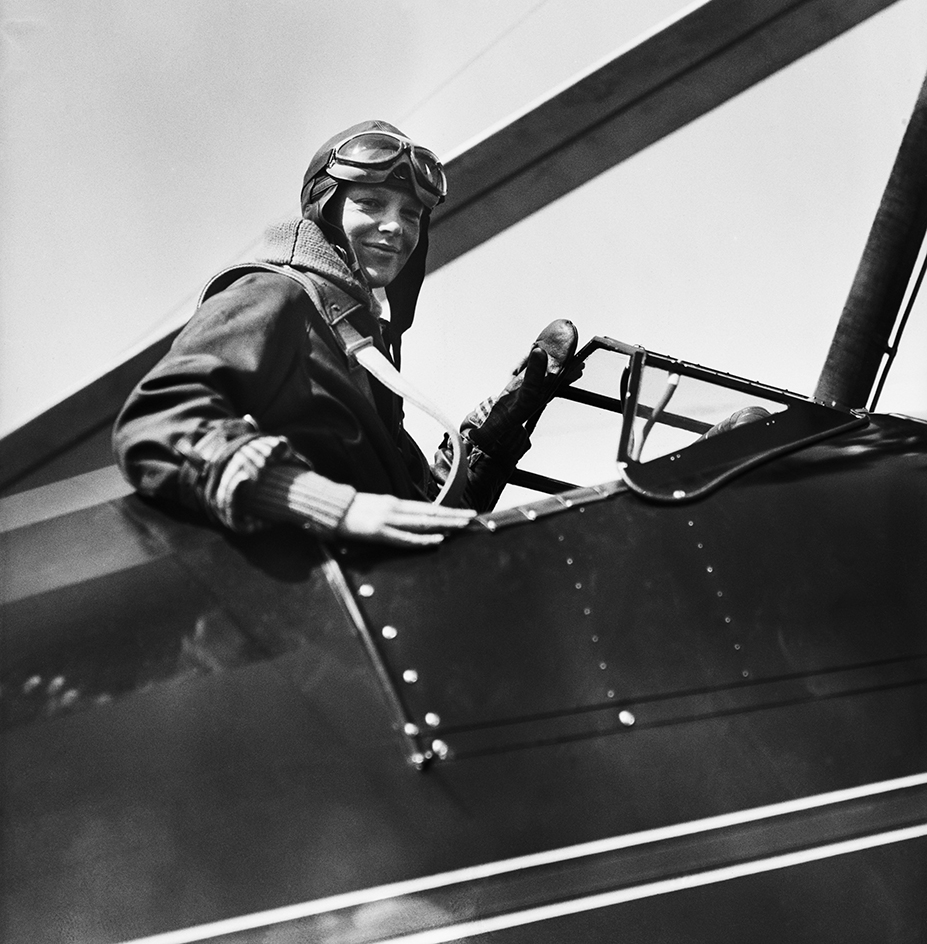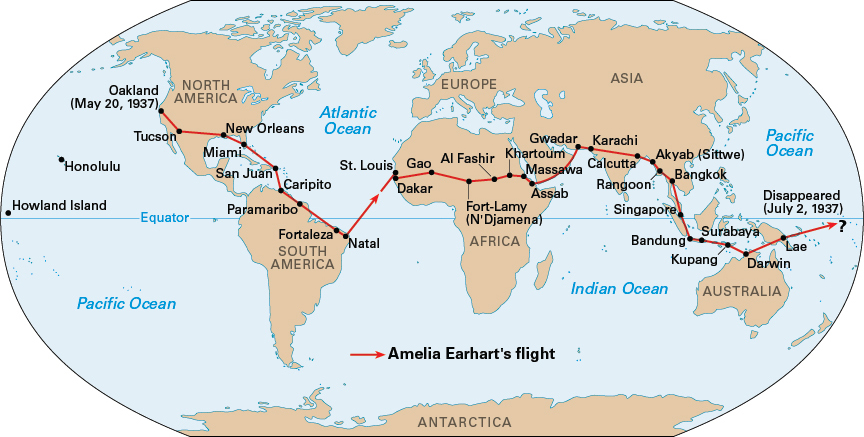Earhart, << AIR hahrt, >> Amelia (1897-1937), an American aviator, became the first woman to fly across the Atlantic Ocean alone. She was also the first woman to receive the Distinguished Flying Cross. The United States Congress awarded her that honor.
Early life.
Amelia Mary Earhart was born in Atchison, Kansas, on July 24, 1897. She received a modest inheritance from her maternal grandmother. The money helped give her a secure life with considerable opportunity for travel. She became a volunteer nurse during World War I (1914-1918).
In 1920, Earhart moved to California to live with her mother. While there, she became fascinated by aviation. Flying was a new and dangerous sport at that time. Earhart took flying lessons from an instructor named Neta Snook. Snook was one of only a few women pilots in the 1920’s. Earhart purchased her own airplane and set an unofficial altitude record for women. In 1924, she moved to the East Coast. Earhart became a social worker in 1926, but she continued to fly.

Flights.
Earhart rode as an observer on a transatlantic airplane flight from Trepassey Bay, Newfoundland, to Burry Port, Wales, in 1928. The flight made her famous as the first woman to cross the Atlantic by airplane. Her resemblance to the famous American pilot Charles Lindbergh also contributed to her fame.
In 1929, Earhart helped found the Ninety-Nines, an international organization of women pilots. The Ninety-Nines provides professional opportunities to women in aviation. In 1931, she married George Palmer Putnam, a wealthy publisher. Putnam had helped organize her 1928 flight.
In 1932, Earhart became the first woman to fly across the Atlantic Ocean alone. She took off from Harbour Grace, Newfoundland, and landed in a pasture near Londonderry, Northern Ireland. She went on to set other speed and distance records. Earhart also became an important figure in the movement to develop commercial aviation.
Loading the player...Amelia Earhart
Disappearance.
In March 1937, Amelia Earhart made her first attempt to fly around the world from east to west, starting in Oakland, California. But she changed plans after crashing her plane in Hawaii . The plane was shipped back to California for repairs and adjustments. Late in May, Earhart, her husband, her navigator Fred Noonan, and a flight mechanic left California. This time, they headed east to Miami, Florida. On June 1, Earhart and Noonan flew from Miami to Puerto Rico. Their flight plan then took them to South America, Africa, Asia, Australia, and the island of New Guinea. They had completed about three-fourths of their planned flight around the world.

On July 2 (local time), Earhart and Noonan left New Guinea and began the longest leg of their journey. They tried to fly 2,600 miles (4,200 kilometers) over open water to Howland Island in the central Pacific Ocean . The next day, a U.S. Navy vessel picked up radio messages from Earhart. She reported empty fuel tanks. But efforts to make radio contact failed. An extensive search found no trace of the plane or crew. Earhart and Noonan probably crashed into the ocean and died. Their plane likely ran out of fuel after navigation errors took them off course.
See also Airplane (Fliers of the golden age.) and Finch, Linda.
